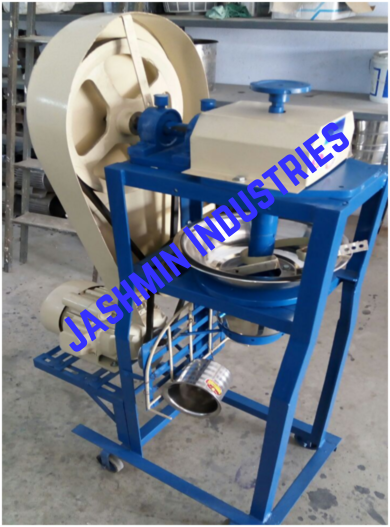Seviyan Making Machine
Product Description:
It is very well standardized and simple. Wheat and other flours in small quantity are mix with around 25% to 30% of water in a mixer for about half an hour and dough is prepared. It can prepared with help either dough mixer (vermicelli Flour mixer) ( this machine would consist of heavy-duty stainless steel body with multi-purpose arms). Heavy-duty gears are providing to take the full load and to avoid damage to the mixer arms) or by hand. The mixed dough is then put into a vermicelli extruder. This vermicelli machine uses extrusion principles that will change the dough into vermicelli threads.

This extrusion is carried out through small holes in the bottom part of the machine whose diameter can be adjusted according to usage. That is 0.5 mm, 1.6 mm and so on by changing the die. This vermicelli (sewai) making machine is run by electricity. This dough is passing through extruder and long rods of vermicelli come out from the extruder with fitted die 0.5 mm to 1.6 mm, which are cuts into the desire length and then placed in the tray drier for drying. Drying temperature is around 55-65 c and time required is 1.5 to 2 hours. Darien piece are weighing and packed in attractively printed polythene bag. The weight and process loss is around 10%
In English, the Italian loanword “vermicelli” is used to indicate different sorts of long pasta shapes from different part of the world but mostly from South or East Asia. The dish in the original language are variously known as seviyan in Urdu and Hindi, sev in Gujarati, shavige in Kannada, sevalu or semiya in Telugu, and semiya in Tamil and Malayalam. The noodles are used in a number of dishes including a variation of kheer, a sweet dessert similar to rice pudding. Vermicelli are also used in many parts of India to make a popular dish called upma. To prepare it, dry oil-roasted vermicelli are boiled with a choice of vegetables.
